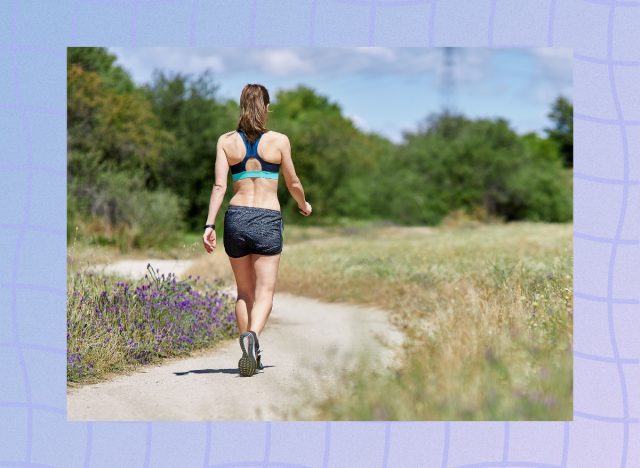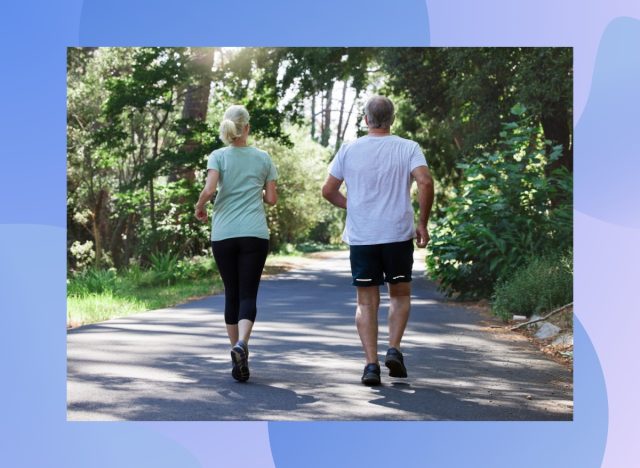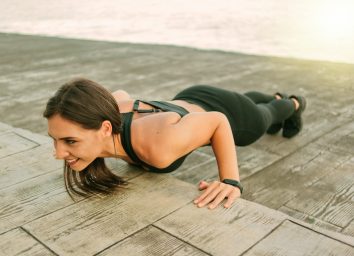Exactly How Fast You Need to Walk to Live Longer, Says Science

If you’re looking to live a longer, more active life, there are certain numbers you need to be aware of. You want to know—and hit—the right blood pressure numbers, the right resting heart rate numbers, the right body mass numbers, and the right cholesterol numbers. If you’re someone who prefers to walk for exercise, there’s yet another data point you should aspire to hit every day: a certain mile-per-hour walking speed. After all, if you walk faster, science has routinely shown that your body will only reap major benefits. Read on for everything you need to know. And for more tips on walking, make sure you’re aware of the Secret Side Effects of Walking Before Breakfast, Says Science.
Slow Walkers Live Shorter Lives

Scores of studies are emerging that show the benefits of walking faster and the perils of walking slower on a daily basis. One study, conducted by researchers at The University of Sydney published in The British Journal of Sports Medicine, found that the faster a person walks on average, the lower their risk of both all-cause mortality and death linked to heart disease.
Another study, conducted by researchers from the National Institute for Health Research (NIHR) Leicester Biomedical Research Centre and published in the International Journal of Obesity, revealed that people who walk slowly are up to four times more likely to die from severe cases of COVID-19—and have more than double the chance of contracting severe cases of the virus—than their brisk-walking counterparts.
And one more recent study, published earlier this year in the journal Cancer Epidemiology, Biomarkers & Prevention, focused on datasets for more than 200,000 cancer survivors between the ages of 50 and 71. It ultimately found that “those who walked at the slowest pace had more than twofold increased risk of death from any cause, compared with those reporting the fastest walking pace.” And for more on walking, make sure you know The Secret Cult Walking Shoe That Walkers Everywhere Are Totally Obsessed With.
Aim for This Walking Speed

According to another study conducted by scientists at the UK’s University of Leicester, which was published in the journal Mayo Clinic Proceedings, a brisk walking pace of at least 4mph is the optimal speed you should be walking. According to the study, women who walked at that pace were able to get a boost in life expectancy of 15 years compared to the women who walked less than 3mph. The elevated life expectancy for men who walked faster was upwards of 20 years.
“Our findings could help clarify the relative importance of physical fitness compared to body weight on life expectancy of individuals,” noted Tom Yates, Ph.D., MSc, BSc, a professor at the UK’s University of Leicester. “In other words, the findings suggest that perhaps physical fitness is a better indicator of life expectancy than body mass index (BMI), and that encouraging the population to engage in brisk walking may add years to their lives.”
Wait—How I Walk a Certain MPH?

The easiest way to know how fast you’re walking is to use do some handy calculations based on the distance you’re walking and the time it takes for you to cover that distance. Perhaps the simplest test requires you to walk one mile at a brisk speed, and go from there. If you walk a mile in 15 minutes, you’re roughly walking 4mph. If you can walk a mile in less than 15 minutes, you’re going faster. (If you walk a mile in 12 minutes, you’re going 5mph.) But if you’re not interested in doing back-of-the-envelope tests and would merely like to go on feel, there’s one more handy reference point you can rely on…
Check the “Perceived Exertion Scale”

According to Harvard Medical School, one surefire way to know that your walks are brisk enough is to make sure you’re adhering to the Perceived Exertion Scale, which helps you gauge your exercise intensity. To get the most out of your walks, you should be walking at a pace in which “talking is difficult and breathing becomes heavier.” And for more on this handy scale, don’t miss The Secret Trick for Walking for Exercise, Says Harvard.








